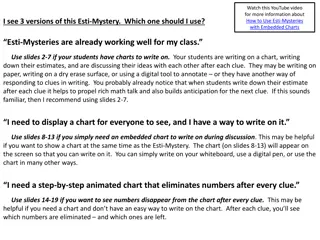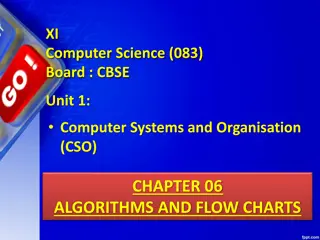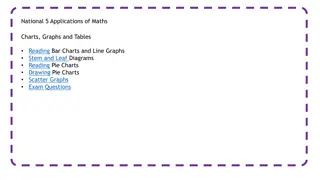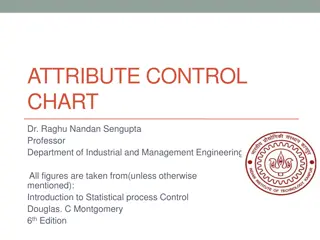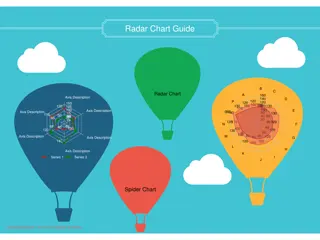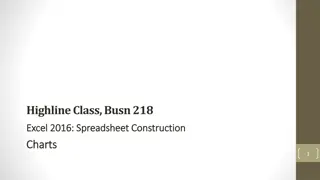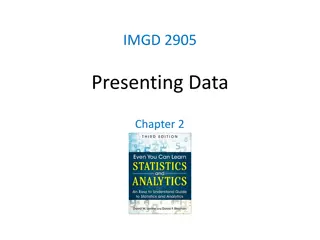Understanding Pseudo Code and Flow Charts for Algorithm Analysis
Explore the concepts of pseudo code and flow charts for analyzing algorithms, problem-solving, and understanding space and time complexity. Learn about basic elements of pseudo code, assigning operations, and writing effective pseudo code statements in a clear and structured manner. Discover the importance of documenting program logic using flow charts and pseudo code to tackle small and large problems efficiently.
Download Presentation

Please find below an Image/Link to download the presentation.
The content on the website is provided AS IS for your information and personal use only. It may not be sold, licensed, or shared on other websites without obtaining consent from the author. Download presentation by click this link. If you encounter any issues during the download, it is possible that the publisher has removed the file from their server.
E N D
Presentation Transcript
Review Review Algorithm Analysis Problem Solving Space Complexity Time Complexity Classifying Functions by Their Asymptotic Growth 1
Pseudo Code and Flow Charts Pseudo Code Basic elements of Pseudo code Basic operations of Pseudo code Flow Chart Symbols used in flow charts Examples 2
Pseudo Code and Flow Charts There are two commonly used tools to help to document program logic (the algorithm). These are Flowcharts Pseudocode. Generally, flowcharts work well for small problems but Pseudocode is used for larger problems. 3
Pseudo-Code Pseudo-Code is simply a numbered list of instructions to perform some task. 4
Writing Pseudo Code Number each instruction This is to enforce the notion of an ordered sequence of operations Furthermore we introduce a dot notation (e.g. 3.1 come after 3 but before 4) to number subordinate operations for conditional and iterative operations Each instruction should be unambiguous and effective. Completeness. Nothing is left out. 5
Pseudo-code Statements are written in simple English without regard to the final programming language. Each instruction is written on a separate line. The pseudo-code is the program-like statements written for human readers, not for computers. Thus, the pseudo-code should be readable by anyone who has done a little programming. Implementation is to translate programs/software, such as C++ language programs. the pseudo-code into 6
Basic Elements of Pseudo-code A Variable Having name and value There are two operations performed on a variable Assignment Operation is the one in which we associate a value to a variable. The other operation is the one in which at any given time we intend to retrieve the value previously assigned to that variable (Read Operation) 7
Basic Elements of Pseudo-code Assignment Operation This operation associates a value to a variable. While writing Pseudo-code you may follow your own syntax. Some of the possible syntaxes are: Assign 3 to x Set x equal to 3 x=3 8
Basic Operations of Pseudo-code Read Operation In this operation we intend to retrieve the value previously assigned to that variable. For example Set Value of x equal to y Read the input from user This operation causes the algorithm to get the value of a variable from the user. Get x Get a, b, c 9
Basic Operations of Pseudo-code Print the output to the user Print x (This will print value of variable x) Print Your mileage is x Cary out basic arithmetical computations Set x to 10 Set y to x*x/3 10
Example: Pseudo-code of calculating area of circle 1. Begin 2. Input value for radius 3. Calculate area (pi x radius2) 4. Output radius and area 5. Quit THEN PROGRAM 11
Flow Chart Some of the common symbols used in flowcharts are shown. 12
With flowcharting, essential steps of an algorithm are shown using the shapes above. The flow of data between steps is indicated by arrows, or flowlines. For example, a flowchart (and equivalent Pseudocode) to compute the interest on a loan is shown below: 13
Note that the Pseudocode also describes the essential steps to be taken, but without the graphical enhancements. Another example of a flowchart and the equivalent Pseudocode is shown next. 15
Some Examples Write pseudo-code of a program that asks the user to enter two numbers and prints the sum, product, difference, and division of the two numbers. Write pseudo-code of a program that solves a quadratic equation ax2+bx+c by taking a, b and c as input from user. 17
Another Example 19
Pseudo Code 20
Draw the Flowchart 1. 2. 3. 4. get hours worked get pay rate if hours worked 40 then 3.1 gross pay = pay rate times hours worked else 4.1 gross pay = pay rate times 40 plus 1.5 times pay rate times (hours worked minus 40) display gross pay halt 5. 6. 24
Draw the Flowchart 1. get number of quizzes 2. sum = 0 3. count = 0 4. while count < number of quizzes 4.1 get quiz grade 4.2 sum = sum + quiz grade 4.3 count = count + 1 5. average = sum / number of quizzes 6. display average 7. halt 25
Summary Pseudo Code Basic elements of Pseudo code Basic operations of Pseudo code Flow Chart Symbols used in flow charts Examples 26



